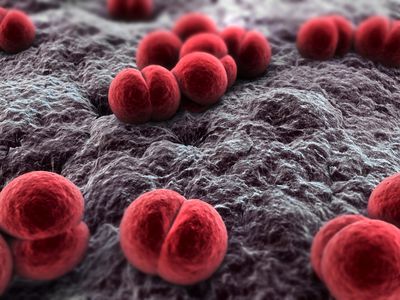Neisseria meningitidis -- Meningitis: Difference between revisions
No edit summary |
|||
| Line 19: | Line 19: | ||
===Description=== | ===Description=== | ||
<i>Neisseria meningitidis</i> is an aerobic, Gram-negative diplococcus that causes meningococcal diseases such as meningococcemia and bacterial meningitis. Meningitis arises upon inflammation of the meninges, which consists of the membrane that envelops and protects the central nervous system. <i>N. meningitidis</i> is also commonly known as meningococcus and is carried by approximately 8-25% of the general population in the normal mucosa of the nasopharynx and upper respiratory tract. The varying compositions of the polysaccharide capsule on different strains of <i>N. meningitidis</i> allow the species to be divided into several serogroups, with serogroups A, B, and C as the prominent strains responsible for outbreaks of meningitis in both developed and undeveloped countries. The infection is transmitted to individuals through contact with respiratory secretions or saliva from sneezing, coughing, and talking. Early diagnosis and immediate treatment are vital to the survival of patients assumed to be infected with meningococcal meningitis. Symptoms of the disease are sudden onset and include fever, neck stiffness, and severe headache. (Ref. CDC and Bioquell) | |||
==Pathogenesis== | ==Pathogenesis== | ||
==Clinical features== | ==Clinical features== | ||
Revision as of 10:17, 27 July 2014


Etiology/Bacteriology
Taxonomy
| Domain = Prokaryote | Phylum = Proteobacteria | Class = Betaproteobacteria | Order = Neisseriales | Family = Neisseriaceae | Genus = Neisseria | species = Neisseria meningitidis
Description
Neisseria meningitidis is an aerobic, Gram-negative diplococcus that causes meningococcal diseases such as meningococcemia and bacterial meningitis. Meningitis arises upon inflammation of the meninges, which consists of the membrane that envelops and protects the central nervous system. N. meningitidis is also commonly known as meningococcus and is carried by approximately 8-25% of the general population in the normal mucosa of the nasopharynx and upper respiratory tract. The varying compositions of the polysaccharide capsule on different strains of N. meningitidis allow the species to be divided into several serogroups, with serogroups A, B, and C as the prominent strains responsible for outbreaks of meningitis in both developed and undeveloped countries. The infection is transmitted to individuals through contact with respiratory secretions or saliva from sneezing, coughing, and talking. Early diagnosis and immediate treatment are vital to the survival of patients assumed to be infected with meningococcal meningitis. Symptoms of the disease are sudden onset and include fever, neck stiffness, and severe headache. (Ref. CDC and Bioquell)
